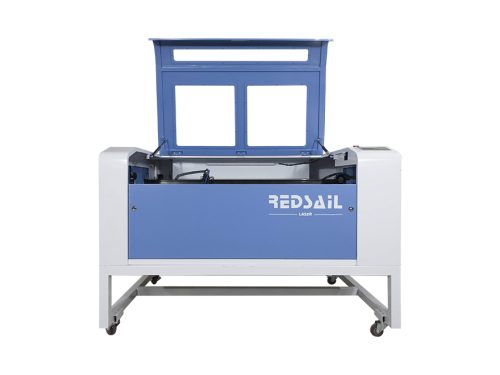
In northern China and many overseas countries exporting, it is inevitable to encounter countries with too hot or too cold weather. Here, we will discuss how to keep the laser cutting machine in the supercooled area.
Optical fiber laser cutting machine is used in various applications all year round, and regular maintenance is essential to keep it in the best condition. This is particularly true in winter or in very cold regions. In order to avoid downtime and unnecessary losses, be sure to take appropriate antifreeze measures. Here are some tips for maintaining the optical fiber laser cutting machine in winter or too cold areas.
Cold state problems of laser cutting machine
As the temperature will drop sharply in cold conditions, running the fiber laser cutter at a significant temperature below 0 ° C will undoubtedly cause problems. Once the cooling water is frozen, its volume will expand, which will cause the internal pipes of the laser or water cooling system to crack or deform. In turn, this will further damage other core components and cause significant losses.
How to maintain the fiber laser cutter in cold conditions?
Please correctly keep the fiber laser cutter in a cold environment according to the following tips:
1. Keep the working temperature above 0 ℃
In order to make the optical fiber laser cutting machine operate normally in winter, it is better to improve the heating facilities in the workshop and ensure that the ambient temperature is above 0 ℃.
If there is no heating equipment in the workshop, and the ambient temperature may be lower than 5 ° C. Keep the cooler running for 24 hours.
At the same time, in order to save energy, the temperature of low temperature water and normal temperature water should be adjusted to 5-10 ℃ to ensure that the cooling water circulates and the temperature is not lower than the freezing point.
For users who add grease to the screw, please do not forget to clean it. Otherwise, it will freeze the movement; When adding grease, make sure that the temperature in the workshop reaches the minimum lubricating temperature.
2. Empty cooling water after use
Drain the cooling water in the pipe after daily use. Use air pump or compressor to effectively discharge water. In addition, if necessary, remove the chiller or water pump and place it in a hot place to prevent the circulating equipment from freezing.
3. Drainage mode
The main drainage components of the laser water cooler and water tank: water tank, pipe, pump head, filter, deionized water tank (optional accessories) disconnect the power supply of the drainage equipment.
Water tank drainage: open the drain valve (or drain plug) at the bottom of the water tank to drain the water in the water tank. If necessary, you can tilt the water cooler to an angle to make the drainage clean.
Drainage of pipes and lasers: first pull out the plug of the four-way water pipe, and then blow compressed air from the drain port and outlet of the pipe for one minute to force the water stored in the pipe to return to the water tank and the water from the drain port of the water tank.
Unscrew the filter element in the chiller and drain the filter element.
Open the water tank cover and observe whether there is still water in the water tank (you can use compressed air to connect the water supply port and blow it back again, and then put the residual water pressure into the pipe, laser (pipe) and pump (return to the water tank, and then drain the water from the water tank outlet). If any, tilt the cooler slightly to run out of water or dry it with a dry towel.
Drain the pump head: Unscrew the screw under the pump to drain the water in the pump. It is better to blow off the remaining water on the pump head with compressed air, and then tighten the drainage screw.
Drain of filter and deionized water tank: open the drain valve at the bottom of filter and deionized water tank or Perspex shell to remove residual water.
4. Add antifreeze to cooling water
If power failure occurs frequently or cold water cannot be drained every day, antifreeze must be used. Antifreeze is usually composed of alcohol and water. It requires high boiling point and flash point, high specific heat and conductivity, low temperature viscosity, low foam, and corrosion of metal parts and rubber hoses. When selecting or preparing antifreeze, its freezing point should be 5 ° C lower than the minimum temperature of the working environment.
5. Short term antifreeze with ethanol
If a power failure occurs and the cooling water cannot be drained, a temporary antifreeze is required. You can add ethanol (alcohol) to deionized or purified water. The amount added shall not exceed 40% of the volume of the water tank. Paint and rubber parts are corrosive and corrosive to metals, so they cannot be used for a long time. You must drain and clean the cooling pipe with purified or deionized water within one week. If antifreeze is still required, special antifreeze must be selected.
Name: antifreeze ethylene glycol (also known as ethylene glycol), which can be purchased in local hardware and chemical stores and online, but liquid transportation is limited.
The ratio with deionized water is at least about 30%, preferably 50% (70% water, 30% ethylene glycol)
Make sure that the ambient temperature is added below and including zero.
Ethylene glycol is not equal to ethanol (alcohol), please make a distinction.
For more information, you can consult us. We will let professional engineers provide you with the best advice and solutions.










